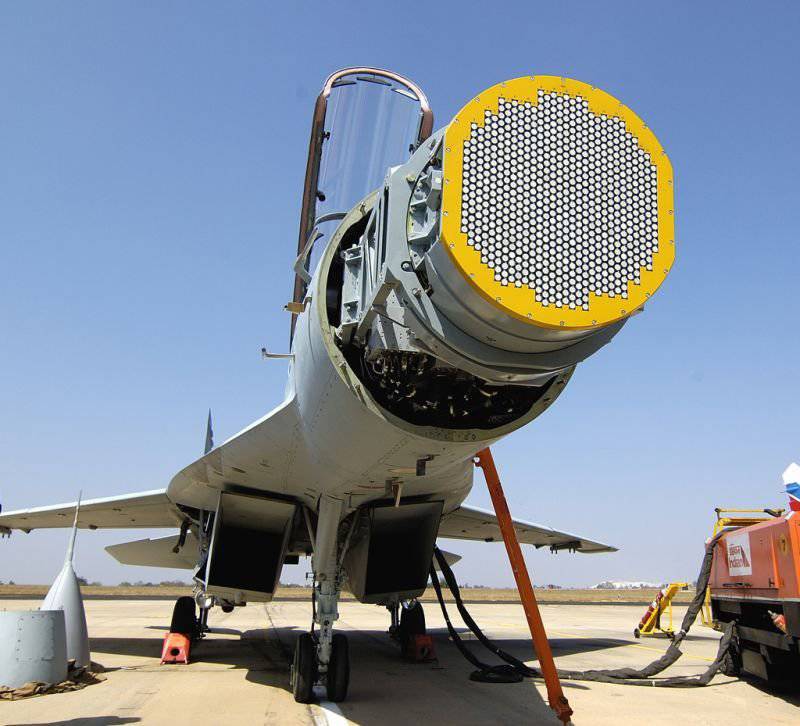New radar to replace the "beetles"

The final name of the development has not yet become public (with a high probability it will no longer be “Beetle”), but a number of technical and conceptual details have been made publicly available. Thus, it is argued that the new station has the following working title: Multipurpose scalable radar or abbreviated MBRLS. According to the available information, MBRLS will be executed according to a modular scheme, which will facilitate the work on the repair or modernization of the station. At the same time, as part of the new on-board radar there will be a separate module responsible for monitoring the performance of all its parts. It is possible that it will allow the maintenance of the MBRLS to the kind that the US designers are aiming for: a cable is connected to the appropriate connector of the aircraft, and the station itself transmits all the collected information about its condition to a special control panel. It analyzes data and automatics gives technical staff recommendations on the work required.
However, the introduction of a separate monitoring module can not affect the weight and dimensions of the entire station. But in recent years, electronics engineers around the world are trying to reduce the weight and size parameters of their creations. According to various estimates, an aircraft radar can overcome the threshold in 150 kilograms of weight only if the emphasis is placed not only on its “iron” part, but also on software. First of all, you need to create such hardware and software that could work with a speed of about 35-40 gigaflops (floating point operations per second). By world standards, this is not a difficult task, but in the conditions of a significant lag of the domestic element base, the creation of such computers becomes much more difficult. In addition, the MBRLS software has several features, which, combined with the nuances of the entire avionics, required the introduction of a separate unit for mathematical modeling of a number of processes, namely: processing the received signal, tracking its own state, simulating the movement of the aircraft carrier and ensuring its navigation. In perspective, any of the listed software modules can be “upgraded” to the new version with the best performance.
In addition to the control module and the process modeling module as part of the radar, as is clear, there must be other units. Moreover, their presence in the case of new developments also requires a number of innovations. As it became known, at the Fazotron-NIIR perspective MBRLS, the connection between the individual modules will be provided by the RapidIO interface with a bandwidth up to 1066 MB / s, which has proven itself well in many foreign electronic systems. According to unconfirmed data, the current architecture of the promising MBRLS with timely upgrades will be able to provide the aircraft with all the necessary qualities for 25-30 years or even more. Another positive aspect of this architecture concerns the placement of individual radar units on the airframe. Thanks to the use of RapidIO tires, if necessary, it is possible to install station modules not as a single unit, but one at a time in possible places of the airframe. The maximum distance at which the wiring allows the radar to function normally is approximately equal to the 10 meters. In addition to the convenience of layout, this can also contribute to an increase in the combat survivability of the aircraft radar in case of its defeat.
Unfortunately, the above describes everything that is known from the new project of JSC Fazotron-NIIR. The fact is that at the moment only what was told by representatives of the enterprise developer at the exhibition “High Technologies of the 21st Century” that was held recently in Moscow is known about the MBRLS project. However, there is data on progress. So, in March of this year, bench tests of a millimeter radio module from the future MBRLS began. According to unverified data, Phazotron plans to finish work on this node by the end of the year, and a full-fledged “presentation to the public” should be expected at the MAKS-2013 showroom. Probably, by the same time, not only the architectural features, but also some technical data of the new radar will be announced.
On the materials of the sites:
http://nvo.ng.ru/
http://www.phazotron.com/
Information